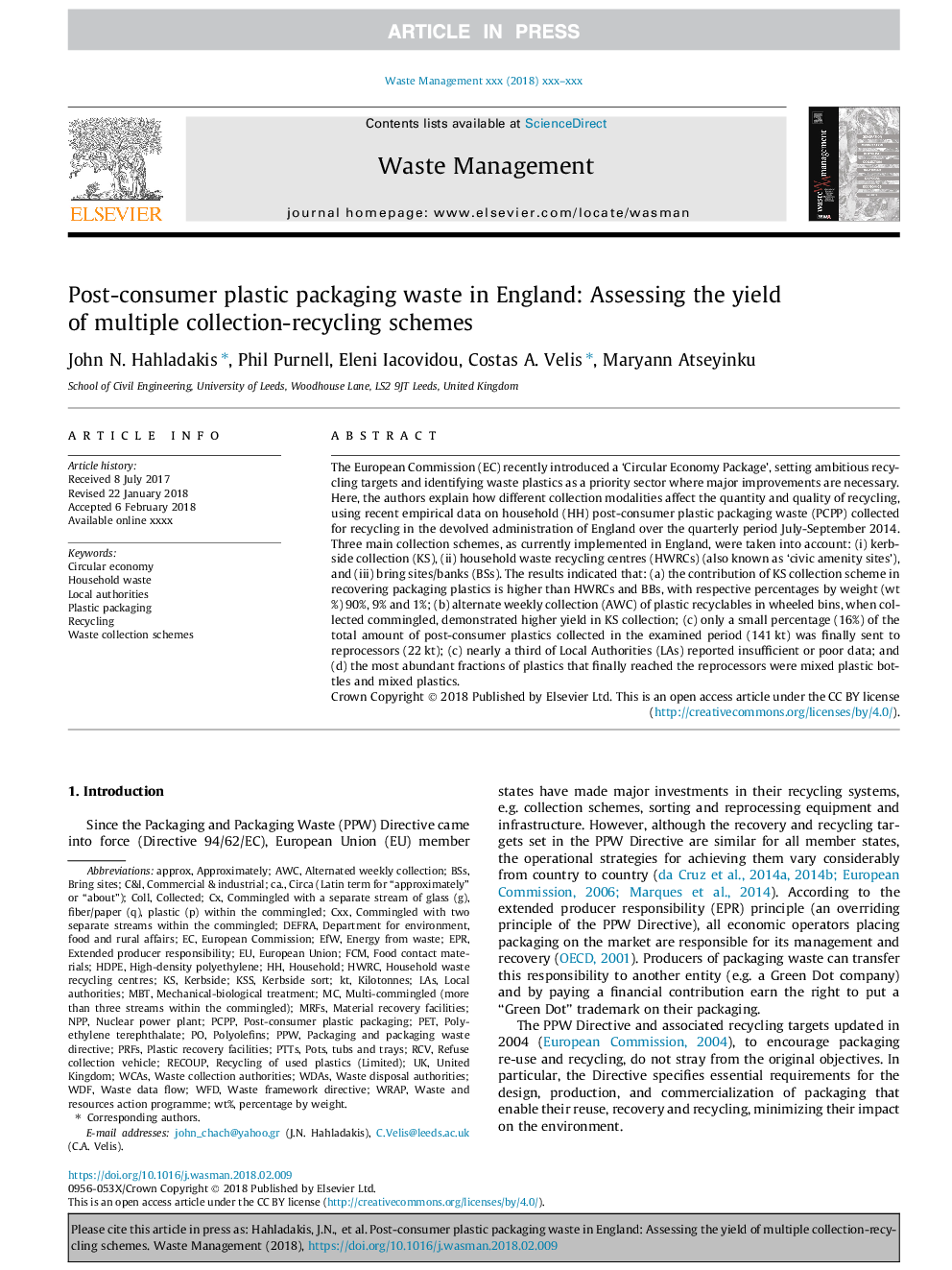| Article ID | Journal | Published Year | Pages | File Type |
|---|---|---|---|---|
| 8869808 | Waste Management | 2018 | 11 Pages |
Abstract
The European Commission (EC) recently introduced a 'Circular Economy Package', setting ambitious recycling targets and identifying waste plastics as a priority sector where major improvements are necessary. Here, the authors explain how different collection modalities affect the quantity and quality of recycling, using recent empirical data on household (HH) post-consumer plastic packaging waste (PCPP) collected for recycling in the devolved administration of England over the quarterly period July-September 2014. Three main collection schemes, as currently implemented in England, were taken into account: (i) kerbside collection (KS), (ii) household waste recycling centres (HWRCs) (also known as 'civic amenity sites'), and (iii) bring sites/banks (BSs). The results indicated that: (a) the contribution of KS collection scheme in recovering packaging plastics is higher than HWRCs and BBs, with respective percentages by weight (wt%) 90%, 9% and 1%; (b) alternate weekly collection (AWC) of plastic recyclables in wheeled bins, when collected commingled, demonstrated higher yield in KS collection; (c) only a small percentage (16%) of the total amount of post-consumer plastics collected in the examined period (141â¯kt) was finally sent to reprocessors (22â¯kt); (c) nearly a third of Local Authorities (LAs) reported insufficient or poor data; and (d) the most abundant fractions of plastics that finally reached the reprocessors were mixed plastic bottles and mixed plastics.
Keywords
PCPPKSSBSSAWCWFDRCVEFWKerbsideNPPC&ILASDEFRAPolyolefinsMBTPRFSHDPEPPWWDFFCMMRFswt%European UnionCircular economyEnergy from wasteRecyclingPlastic packagingWrapEPRca.HouseholdMechanical-biological treatmentWaste framework directiveHousehold wasteLocal authoritiesExtended producer responsibilityFood contact materialsnuclear power plantUnited KingdomPETHigh-density polyethylenePolyethylene terephthalateCollEuropean Commission
Related Topics
Physical Sciences and Engineering
Earth and Planetary Sciences
Geotechnical Engineering and Engineering Geology
Authors
John N. Hahladakis, Phil Purnell, Eleni Iacovidou, Costas A. Velis, Maryann Atseyinku,
